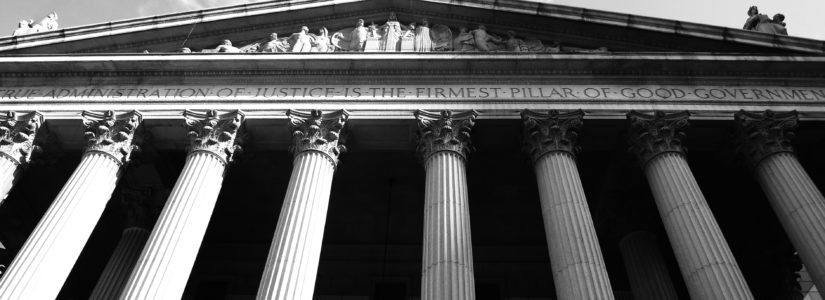
Capturing Legal Stories
May 22, 2016
Article from the Spring 2016 Newsletter
Last fall the New York Preservation Archive Project launched Through the Legal Lens: Interviews with Lawyers Who Shaped NYC’s Landmarks Law, a new oral history project funded in part through a grant from the Arthur F. & Alice E. Adams Charitable Foundation. Through the Legal Lens documents the experiences of individuals who have been pivotal actors in the changing landscape of New York City’s Landmarks Law. In 1965, the New York City Landmarks Law was enacted to protect historic sites and neighborhoods from decisions that would destroy or fundamentally alter their character. Fifty years later, numerous challenges to landmark legislation have been overcome and the law has been augmented thanks, in part, to the work of the individuals interviewed in this project. As lawyers, they have defended the administration of the law, argued decisive preservation-related court cases, and worked to secure the legal power that protects the City’s architecture.
In December 2015 the Archive Project conducted the initiative’s first oral history interview with Virginia Waters. In her position as Assistant Corporation Counsel, Waters handled many landmark cases over the past 25 years but she is perhaps best known for her work on the Manee-Seguine Homestead demolition-by-neglect case and the City and Suburban First Avenue Estate hardship case. In subsequent months the Archive Project interviewed Gabriel Taussig and Leonard Koerner. Taussig is an attorney who worked in the Law Department of New York City for nearly four decades, including 20 years as Division Chief for the Administrative Law Division, which handles many legal matters related to preservation. Some of the more notable cases in which he has been involved include the rezoning of South Street Seaport to preserve its historic character, the St. Bartholomew’s Church case challenging the designation of religious landmarks, developers’ attempts to strip detail from landmark buildings, and the 2011 lawsuit over alterations to the Manufacturers Trust Company building. Koerner was the Appeals Division Chief for many years and continues to work at the New York City Law Department. He was involved with Penn Central Transportation Co. v. New York City (1978), which ruled that the City had the constitutional authority to regulate landmarks even when it meant that an owner was prevented from developing its property as allowed by zoning, thereby suffering a financial loss to create a public benefit. This coming summer, we are also slated to interview Jeffrey Friedlander. Friedlander has been with the New York City Law Department for 45 years and is currently the First Assistant Corporation Counsel. Among other issues, he was involved with the passage of the 1973 amendments to New York City’s Landmarks Law, which established interior landmarks and scenic landmarks, and otherwise transformed the workings of the Landmarks Preservation Commission.
The Archive Project’s oral history coordinator, Liz Strong, is at the head of this new initiative. Strong first joined us in 2015 to spearhead the Saving Preservation Stories: Diversity & the Outer Boroughs oral history project. Strong is an experienced oral historian with an M.A. in Oral History from Columbia University. Additionally, the Archive Project was thrilled to secure William Cook as the interviewer for this project. Cook is Associate General Counsel at the National Trust for Historic Preservation. His primary area of responsibility includes litigation advocacy on behalf of the National Trust in courts across the United States. He lectures regularly to national audiences on issues related to property, land use, and historic preservation law, and teaches a related course at Columbia University.
Collecting the oral histories of these important legal figures will assist today’s preservationists in envisioning the future of the field. To further support that mission, the Archive Project has also taken its first steps in drafting a written manual that will act as a practical guide to undertaking collaborative oral history projects. This manual will introduce the value of conducting oral history projects, provide key tools to getting started, and give examples and advice from the Archive Project’s experience in undertaking large-scale initiatives. The goal of this manual is to inspire new initiatives across the nation that will document the stories of important preservationists. Throughout 2016 and 2017 the Archive Project will promote this model at national conferences and forums, as well as digitally online. The progress made and insights gained by the Archive Project over the past decades collecting oral histories will become a lasting resource for other preservation organizations and for future oral history projects.
These oral histories and the educational manual will soon be available via our website. Please feel free to contact us with any insights or questions about these interviews.